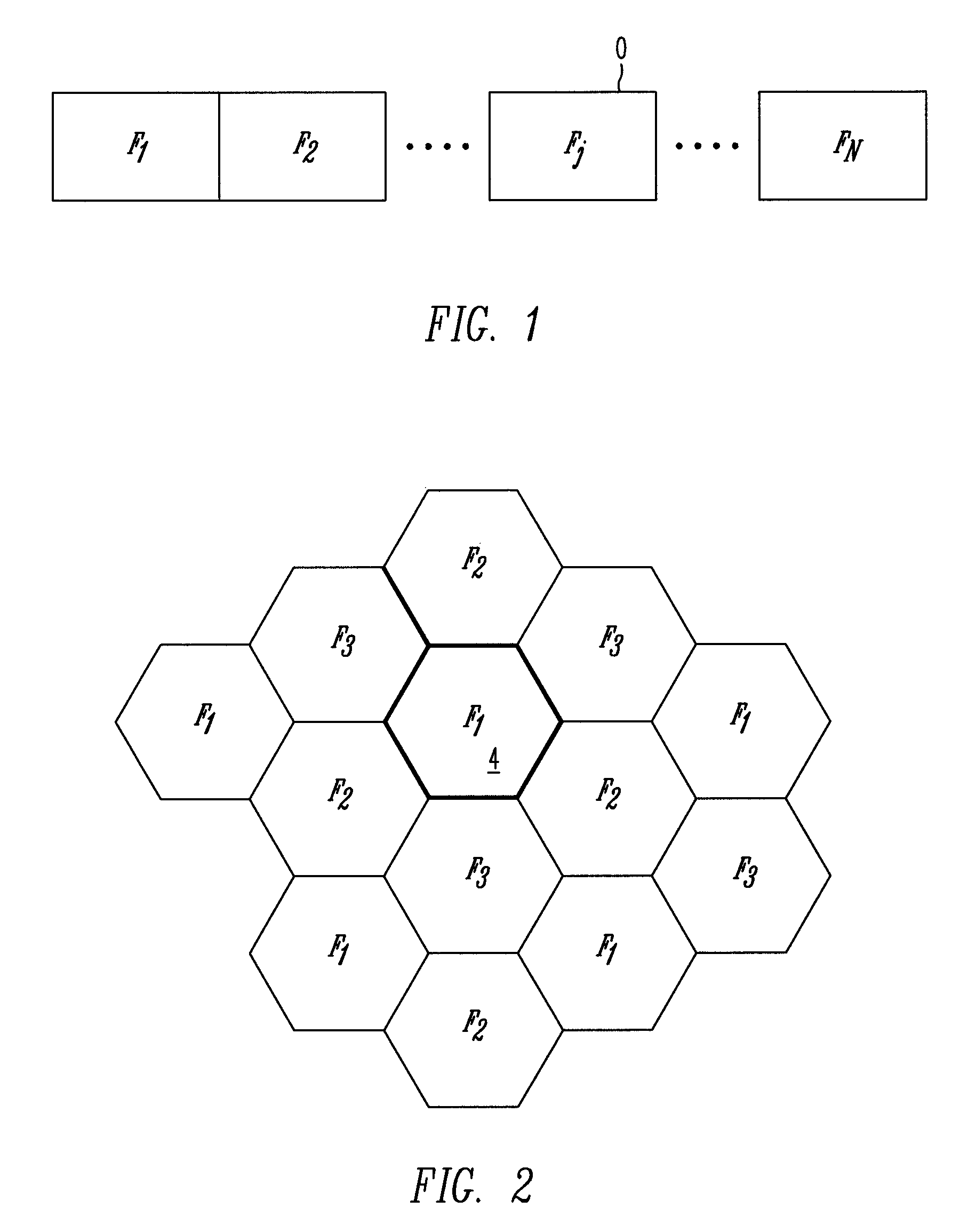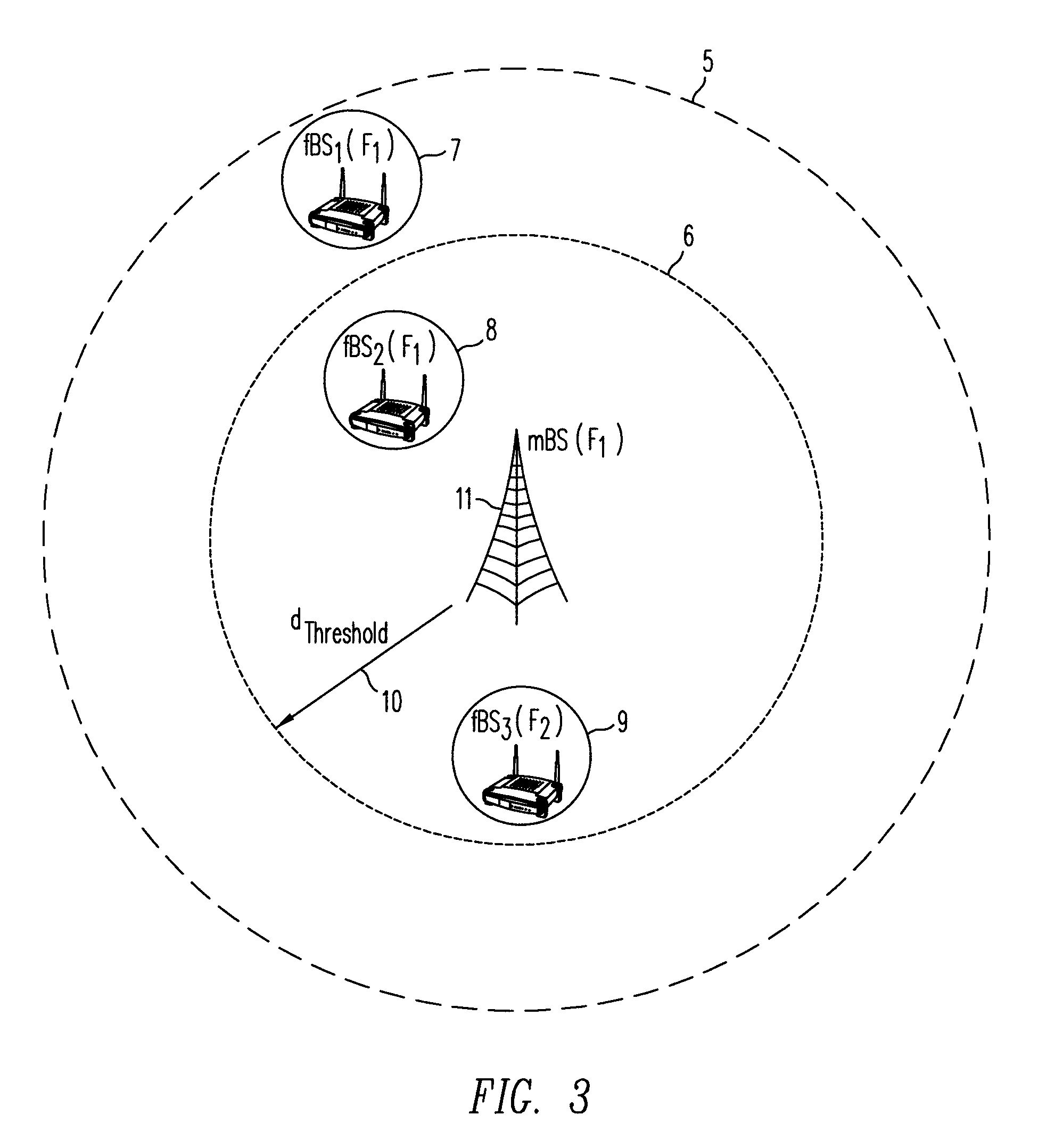Femtocell channel assignment and power control for improved femtocell coverage and efficient cell search
a cell and channel technology, applied in the field of wireless communication, can solve the problems of poor customer experience, dead spots and poor coverage, and more expensive mobile telephone service, and achieve the effect of increasing the efficiency and coverage of macro cellular networks and efficiently managing
- Summary
- Abstract
- Description
- Claims
- Application Information
AI Technical Summary
Benefits of technology
Problems solved by technology
Method used
Image
Examples
Embodiment Construction
[0039]FIG. 1 illustrates a macrocell network 0 that has a frequency reuse factor N>1. In such a network, N frequency bands are assigned to the macrocells of the network, such that each macrocell is assigned a different frequency band than any of its neighboring macrocells. In the example of FIG. 1, without loss of generality, frequency band Fi is assigned to macrocell 0. FIG. 2 illustrates a frequency band assignment for a network having reuse factor N=3, where no neighboring macrocells use the same frequency band. As shown in FIG. 2, macrocell 4, for example, is assigned frequency band F1. Within each frequency band, the users may be further separated in time, frequency, or code domains. For example, in a wideband code division multiple access (WCDMA) network, each user in a macrocell is assigned a different CDMA code, selected from a set of CDMA codes, to minimize interference among users in the macrocell cell. There may be tens or even more femtocells within a macrocell.
[0040]As ...
PUM
 Login to View More
Login to View More Abstract
Description
Claims
Application Information
 Login to View More
Login to View More - R&D
- Intellectual Property
- Life Sciences
- Materials
- Tech Scout
- Unparalleled Data Quality
- Higher Quality Content
- 60% Fewer Hallucinations
Browse by: Latest US Patents, China's latest patents, Technical Efficacy Thesaurus, Application Domain, Technology Topic, Popular Technical Reports.
© 2025 PatSnap. All rights reserved.Legal|Privacy policy|Modern Slavery Act Transparency Statement|Sitemap|About US| Contact US: help@patsnap.com



